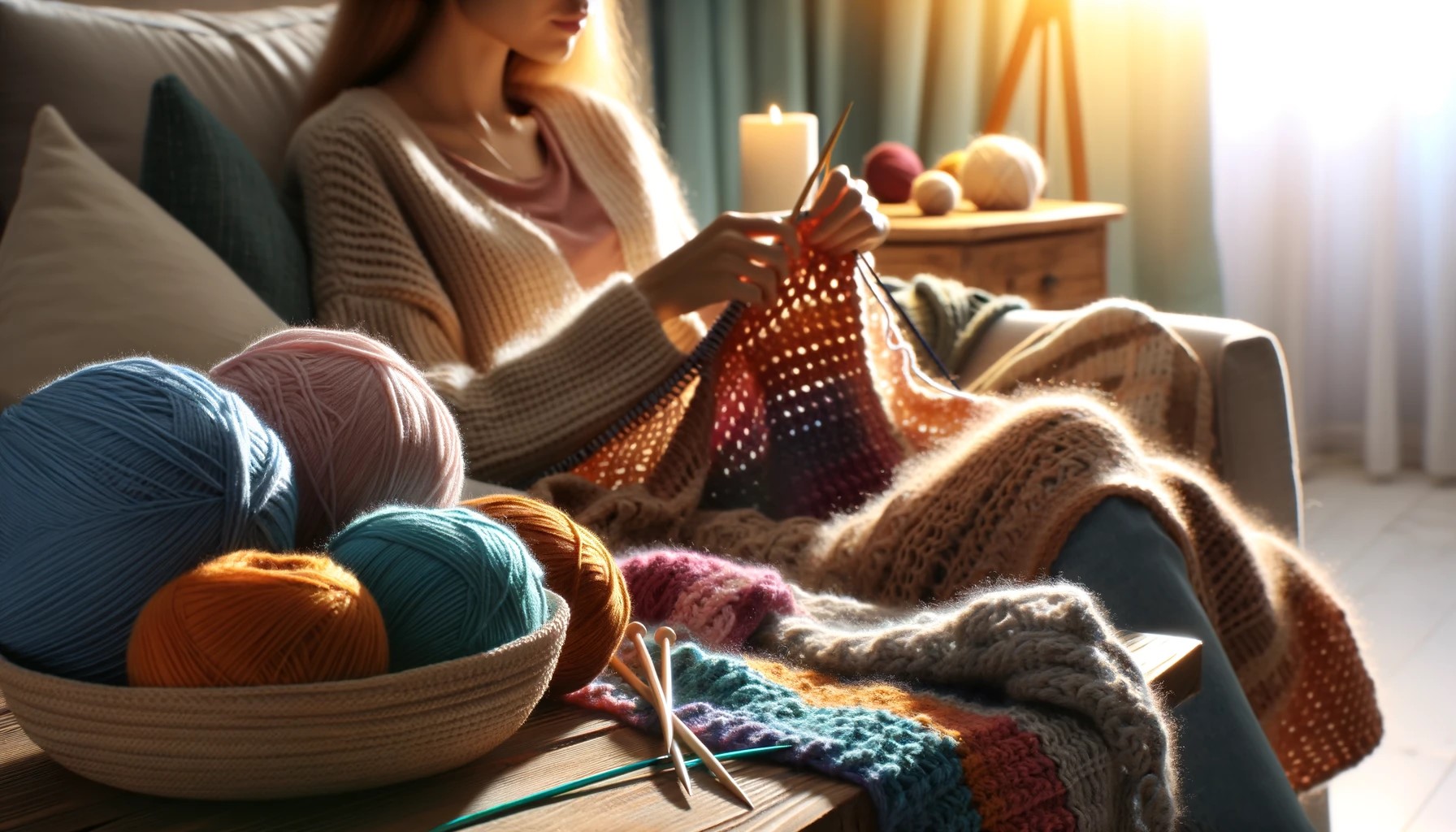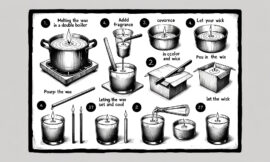Knitting is a timeless and therapeutic craft that allows you to create beautiful, handmade items while offering relaxation and creative expression. Whether you’re a novice embarking on your knitting journey or an experienced knitter looking for a satisfying project, knitting a scarf or blanket is an excellent choice. This guide will provide you with the essential steps to get started with knitting these cozy and versatile items.
Getting Started with Knitting
To begin your knitting project, you’ll need some essential supplies:
- Yarn: Choose a yarn that feels soft and comfortable. For beginners, it’s recommended to start with a medium-weight yarn as it is easier to work with.
- Knitting needles: The size of your knitting needles should match the weight of your chosen yarn.
- Scissors
- A tapestry needle: This is used for weaving in loose ends and finishing your project neatly.
Choosing Your Project
First, decide whether you want to knit a scarf or a blanket. A scarf is an ideal beginner’s project due to its smaller size and simplicity, making it a great way to learn the basics of knitting. Blankets can be more time-consuming but equally rewarding for those looking for a larger project.
Casting On
Casting on is the initial step in creating your row of stitches. There are various methods for casting on, but the long-tail cast-on is a good starting point for beginners.
The Basic Stitches
Familiarize yourself with the two fundamental knitting stitches:
- Knit stitch: This creates a smooth, textured surface and is often used for the right side of your work.
- Purl stitch: This produces a bumpy texture and is often used for the wrong side of your work.
For a straightforward scarf or blanket, you can choose between two basic stitch patterns:
- Garter stitch: This involves knitting every row, creating a textured, reversible fabric.
- Stockinette stitch: This alternates a knit row with a purl row, resulting in a smooth, flat side (right side) and a bumpy side (wrong side).
Knitting Your Scarf or Blanket
Start by knitting a test swatch to determine your gauge, which refers to the number of stitches per inch you are knitting. Gauge ensures that your project will turn out the correct size.
Once you’re comfortable with your gauge, begin your project. For a standard scarf, cast on 20 to 30 stitches in width. For a blanket, the width will vary depending on the desired size.
Continue knitting until you reach your desired length. Scarves are typically around 60-70 inches long, while blankets can be customized to your preferred dimensions.
Binding Off
Binding off is the process of finishing your knitting project and removing it from the needles. There are different methods for binding off, but the basic bind-off works well for most projects.
Adding Personal Touches
To make your scarf or blanket unique, consider these personalization options:
- Experiment with different knitting patterns and stitches to add texture and visual interest to your project.
- Add fringe or tassels to your scarf for a decorative touch.
- For blankets, you can try knitting individual squares or strips and then stitching them together to create intricate designs or patterns.
Caring for Your Knitted Items
To ensure the longevity and quality of your knitted items:
- Always refer to the yarn label for washing and care instructions specific to your chosen yarn.
- In general, it’s advisable to hand wash your knitted items with mild detergent and cool water to maintain their shape and prevent stretching or shrinking.
- Gently squeeze out excess water and lay your knitted items flat on a towel to air dry.
Knitting a scarf or blanket is more than just a craft; it’s a way to create something both beautiful and practical. It offers a meditative and relaxing hobby, allows for personalized gifts, and can serve as a stepping stone to more complex knitting projects as you continue to explore this timeless art form.



